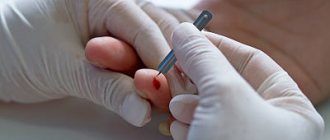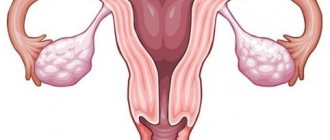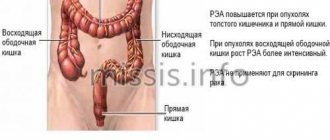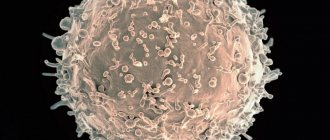Detailed description of the study
The study is carried out using the PCR method. PCR (polymerase chain reaction) is the fastest and most reliable method for diagnosing infectious diseases. Most often it is used to detect sexually transmitted infections (STIs). PCR diagnostics is effective for detecting microorganisms that are difficult to detect in the laboratory, atypical forms of bacteria, intracellular parasites and microorganisms that can exist for a long time in the host’s body and cause chronic diseases.
The complex conducts research on the following pathogenic microorganisms:
- Trichomonas vaginalis is the causative agent of urogenital trichomoniasis. This anaerobic parasite lives in the genitourinary tract of men and women, with Trichomonas vaginalis being found more often in women. Men are mainly carriers of Trichomonas infection. The main habitat of urogenital Trichomonas in the male body is the urethra, prostate gland and seminal vesicles, in the female body - the vagina, cervix and urethra.
- Chlamydia trachomatis is an obligate intracellular parasite, transmitted primarily through sexual contact, and causing chlamydia (primarily lesions of the mucous membranes of the genital tract, conjunctivitis). A fairly widespread infection, it can be asymptomatic, often becomes chronic, and is accompanied by various complications, which sometimes cause infertility and miscarriage in women.
- Mycoplasma genitalium is a pathogenic microorganism that causes diseases of the genitourinary tract. Mycoplasmas are transmitted through sexual contact and can cause nongonococcal urethritis and prostatitis, pelvic inflammatory diseases, pathologies of pregnancy and the fetus, and infertility in women and men.
- Neisseria gonorrhea is a gram-negative bacterium related to diplococci and causes the most common sexually transmitted disease - gonorrhea. It affects the mucous membranes of the genitourinary system in both men and women. Newborns can become infected with gonorrhea when the baby passes through the birth canal (blennorrhea neonatorum).
It is possible to conduct a study using a urogenital smear, a smear from the conjunctiva of the eye, or the oral cavity. A urogenital smear is taken from the urethra in men, and from the vagina, urethra, and cervical canal in women. In the Hemotest Laboratory, by default, a smear is taken from the cervical canal. A smear from the conjunctiva of the eye is taken by a specialized specialist (ophthalmologist).
Culture for STIs
Examination of scrapings using culture is probably one of the most well-known methods.
The approach is known among patients for its high diagnostic accuracy.
But it also requires quite a lot of time.
During the study, samples are applied to special nutrient media.
These environments contain all the substances necessary for bacteria or fungi to fully develop, grow and reproduce.
Microorganisms begin to multiply intensively, forming colonies in favorable conditions.
It is these colonies that the doctor evaluates as soon as their growth is sufficient.
As doctors note, sowing is both the method of choice and a method that has its own disadvantages.
The disadvantages of the technique include, first of all, the fact that it is not able to detect viruses.
Of course, in separate laboratories it is possible to grow viral colonies on chicken embryos and judge the infection.
But this is a troublesome and expensive task, and therefore it is practically not used.
At the same time, sowing has no equal in the field of identifying bacteria and fungi that are capable of growing on nutrient media.
Although the method requires some time for the bacteria to create colonies, it gives the most accurate results.
Clinical manifestations
If you notice the following symptoms, consult a venereologist:
- the appearance of a rash or sores in the genital area;
- redness and swelling of the genitals, severe itching, which intensifies at night;
- formation of papillomas and condylomas on the genitals;
- purulent, serous, bloody discharge from the urethra or vagina;
- enlarged lymph nodes in the pelvic area;
- difficulty urinating, false urge to visit the toilet;
- unpleasant or painful sensations in the lower abdomen.
These symptoms can indicate not only STDs, but also diseases of the internal organs. It is necessary to contact a medical center to diagnose the disease and begin treatment.
When is a scraping performed for an STI?
Patients ask their doctors when they can take a scraping for an STI after infection.
As doctors note, running to the hospital immediately after suspicious sexual contact is pointless.
The fact is that any pathogenic microorganism, be it a fungus, a virus or a bacterium, has its own incubation period.
The incubation period is the time it takes for a pathogen to increase in number enough to cause symptoms of disease.
During the incubation period, the disease does not make itself felt in any way, and is not even detected during tests.
Naturally, the incubation period varies for different infections.
It is the shortest in bacteria.
For example, gonorrhea clearly manifests itself on average 2-3 days after contact.
The longest is for viruses.
HIV can remain silent after entering the body for up to six months.
It is also important to know when you can take a scraping for STIs after treatment.
The first time the patient should see a doctor is 48 hours after the antibacterial agents have been discontinued. A repeat visit is made after 14 days.
If there are no suspicious changes in the scraping, the patient is considered cured.
Microscopy of scraping for STIs
Scraping microscopy is the basic, simplest method for evaluating patient specimens.
Moreover, the doctor can evaluate both a native smear and a specially prepared one.
If we are talking about a native smear, then simply biological material is placed on a glass slide without performing any manipulations with it.
Most often, it is difficult to see anything specific in such a smear, but an experienced doctor can do this.
A specially prepared smear is stained.
With its help, bacteria and fungi can be more clearly identified, and it becomes possible to identify and evaluate them.
Often, during microscopy, the number of pathogenic microorganisms is counted, which can play a role in the further treatment of the patient.

As with culture, microscopy cannot see viruses.
Unless, of course, the laboratory is equipped with a very powerful microscope with which one could see viral particles.
At the same time, the method is easy to implement and does not require any financial costs.
Microscopy is also considered one of the fastest research options.
Since in some cases it can be carried out directly in the office.
Even before the patient and doctor complete their consultation.
Methods of treatment and prevention of STIs
Antibiotics, antiviral or antifungal drugs are used to treat sexually transmitted diseases. The choice of treatment method depends on the causative agent of the disease. If you have a regular partner, he should undergo testing and treatment if necessary.
During treatment for STIs, sexual contact should be limited. Sometimes it is acceptable to use condoms when warning your partner about your condition. The decision on the permissibility of sexual intercourse is made by a venereologist. By not following the recommendations, you can get complications or accidentally infect another person.
A person does not develop immunity to most STIs. Exceptions are hepatitis B and some strains of papillomavirus. After successful treatment, re-infection is possible. To avoid infection, use condoms when meeting new partners. Use bactericidal agents to avoid household contact infection.
When to get tested
Venereologists recommend testing for STIs:
- after unprotected sexual intercourse with a new partner;
- if unpleasant symptoms occur in the genital area;
- one month after completion of treatment for venereological diseases;
- for prevention 1–2 times a year (even in the absence of sexual activity);
- When planning a pregnancy, both partners need to be tested.
According to medical statistics, venereal diseases affect up to 30% of the Russian population. Some infections are transmitted not only through sexual intercourse, but also through household contact. Even people who have a regular partner are at risk.
Many STIs are hidden. But if treatment is not started on time, the infection causes severe harm to the body. Neglected diseases lead to chronic inflammation of the genital organs, female and male infertility, and even the growth of tumors.
Features of preparation for scraping for STIs
Patients often ask their doctors about how to prepare for the test.
Proper preparation is the basis for obtaining reliable results.
Doctors tend to focus special attention on this.
Scraping should not be performed unless the patient has undergone basic training to make the examination as reliable as possible.
Recommended:
- under medical supervision, refuse to use antibacterial drugs that may affect the results of the study
- women will have to stop washing and douching the vagina for at least two days, as these procedures disrupt the microflora and can blur the results
- At least two days must also pass between the vaginal examination, ultrasound and other similar procedures and the scraping.
- It is not recommended to indulge in sexual pleasures 48 hours before the test
- you will have to not go to the toilet for at least two hours so that urine does not wash away some of the microorganisms from the mucous membranes
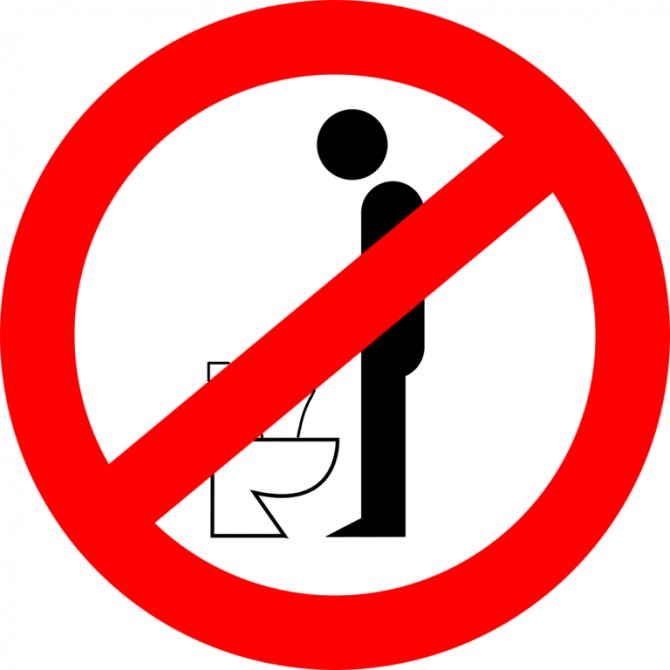
For some diseases, the use of provocative measures is considered relevant.
On the doctor's recommendation, you can drink a little alcohol and eat junk food.
This will help activate the pathogenic microorganism, making its effect on the body more pronounced.
However, tests are not prescribed for all infections.
Therefore, you cannot break your diet or drink alcohol on your own a few days before the test.
Advantages of "Polyclinic +1"
If you are looking for where to get tested for sexually transmitted infections in Moscow, come to Polyclinic +1. We offer:
- Take tests for hepatitis B and C, HIV, syphilis and get results in 20 minutes. Price: 500 rubles per check for 1 diagnosis.
- Complete anonymity when taking tests and treating STDs. To visit a doctor you do not need to show your passport. We guarantee the confidentiality of patients' personal data.
- Professionalism: our clinic is a licensed medical institution.
- Consultation and treatment by experienced venereologists with more than 20 years of experience. It is not the nurse who takes the tests, but the venereologist himself.
- Convenient appointment time. The medical center is open from 9:00 to 21:00. Reception is by appointment. You don't have to wait in line.
- Convenient location: “Policlinic +1” is located in the center of Moscow, 5 minutes from the Novokuznetskaya and Tretyakovskaya metro stations.
- Free parking. To use parking, you must inform the administrator in advance of your visit.
Planning a pregnancy
Some STIs can be transmitted perinatally (from mother to child). Complications can affect pregnancy, lead to miscarriage or premature birth. Infections in newborns are much more severe than in adults.
You should get tested for STIs at the stage of pregnancy planning. If one of the partners is unwell, you need to undergo treatment before conception. During pregnancy it is necessary to take tests several times. This procedure is safe for pregnant women. When an infection is detected, special medications suitable for pregnant women are prescribed.
Price list
| Medical service | Cost, rub.) |
| Flora smear | 900 |
| Bacterial culture | from 1 600 |
| Taking blood for testing | 500 |
| Taking a smear for examination | 500 |
| Rapid blood test for HIV, syphilis, hepatitis B and C | from 500 |
| DNA diagnosis of latent infections (HPV, genital herpes, gardnerella, chlamydia, ureaplasma, mycoplasma) | from 300 |
| Comprehensive analysis for major STIs | 900 |
| Treatment of sexually transmitted diseases | 3 500 |
| Prevention after casual sexual contact | from 1000 |
| Complex PCR-12 | 3 000 |
| Consultation and examination with a venereologist | 900 |
| Secondary appointment with a venereologist | 900 |
| Drawing up an individual therapy plan | 1000–2500 |
Thus, the price of testing for all sexually transmitted diseases starts from 500 rubles for 1 diagnosis. The total amount depends on the test plan drawn up by the doctor.

